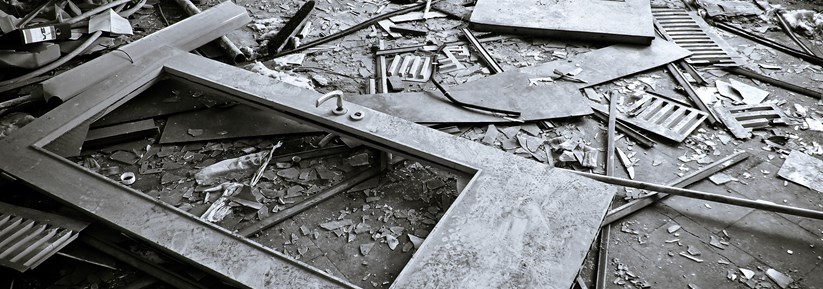What are Property Dilapidations?

Find out what dilapidations are and why you need to consider them before taking out a lease.
This guide provides information for tenants and landlords on things to consider when dealing with a dilapidations claim made by a landlord at, or near, the end of the lease.
Dilapidations refers to breaches of lease covenants that relate to the condition of a property during the term of the tenancy or when the lease ends.
Whether you are a tenant or a landlord, using the services of a chartered surveyor during a dilapidations claim will prove invaluable. They will offer clear and concise information and advice to help you through a claim.
Things a tenant should consider
Before signing a lease
You should familiarise yourself with the terms of the lease and its dilapidations implications before signing the contract. A chartered building surveyor can advise you on the implications of the clauses you are signing up to.
During the lease term
You should consider the potential of future dilapidations liability during the term of your lease and budget for it. If you carry out alteration works to the premises, then it is likely that your landlord may require to you reinstate those alterations before the lease ends.
Near the end of the lease
You should be aware of the extent of dilapidations work you have committed to complete. This can be a complicated assessment and it would be normal for you to engage a chartered building surveyor who is experienced in dilapidations to advise you.
Unless you have completed all the building work which the lease you signed and any licences for alterations required you to carry out, you should expect to receive a Schedule of Dilapidations from your landlord. If you have made any alterations to the property during your lease, your landlord may serve you with a notice to reinstate the alternations you have made.
This notice can be included in the Schedule of Dilapidations or sent separately.
If dilapidations works are not complete before the end of the lease term then your landlord can claim damages from you to recompense them for the adverse financial position they may find themselves in.
Things a landlord should consider
Timing is important. Before the end of the lease you may need to serve Notices on your tenant so that they reinstate alterations made to the property during the lease. Then, as a rule, you should issue a Schedule of Dilapidations and a Quantified Demand within about 56 days after the end of the lease term.
It is normal to engage a chartered building surveyor to prepare a Schedule of Dilapidations on your behalf. Before they prepare the Schedule of Dilapidations the surveyor will ask you what your intentions for the property were on the date the lease ended. This is so that your surveyor can endorse the Schedule, which is a requirement of the Dilapidations Protocol. Your answer must be honest and full as it may be reviewed by a court in years to come.
When preparing the Schedule of Dilapidations, your surveyor will use an industry standard form which will be sent to the tenant. If you do send a Schedule of Dilapidations to the tenant before the end of the lease term you are expected to update it at the end of the lease term.
The Schedule of Dilapidations will normally set out the cost of the works which the tenant should have completed. The Quantified Demand may necessarily be set at a lower figure as the amount you are claiming should not exceed your likely loss. If the tenant’s breaches of the terms of the lease have not caused you to suffer a loss then you must not include these items.
The reasonable cost of works that the tenant should have carried out is likely to be the main guide to the amount of compensation you seek; however, the law does not allow this to exceed the amount by which the property had in fact been devalued by the tenant’s breaches at the end of the lease.
Image: Dirk Duckhorn